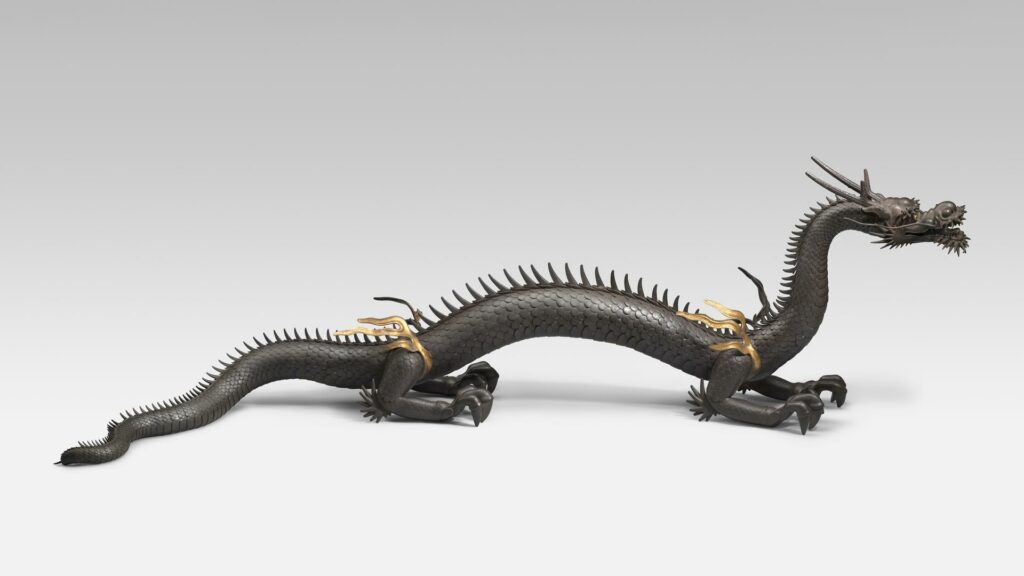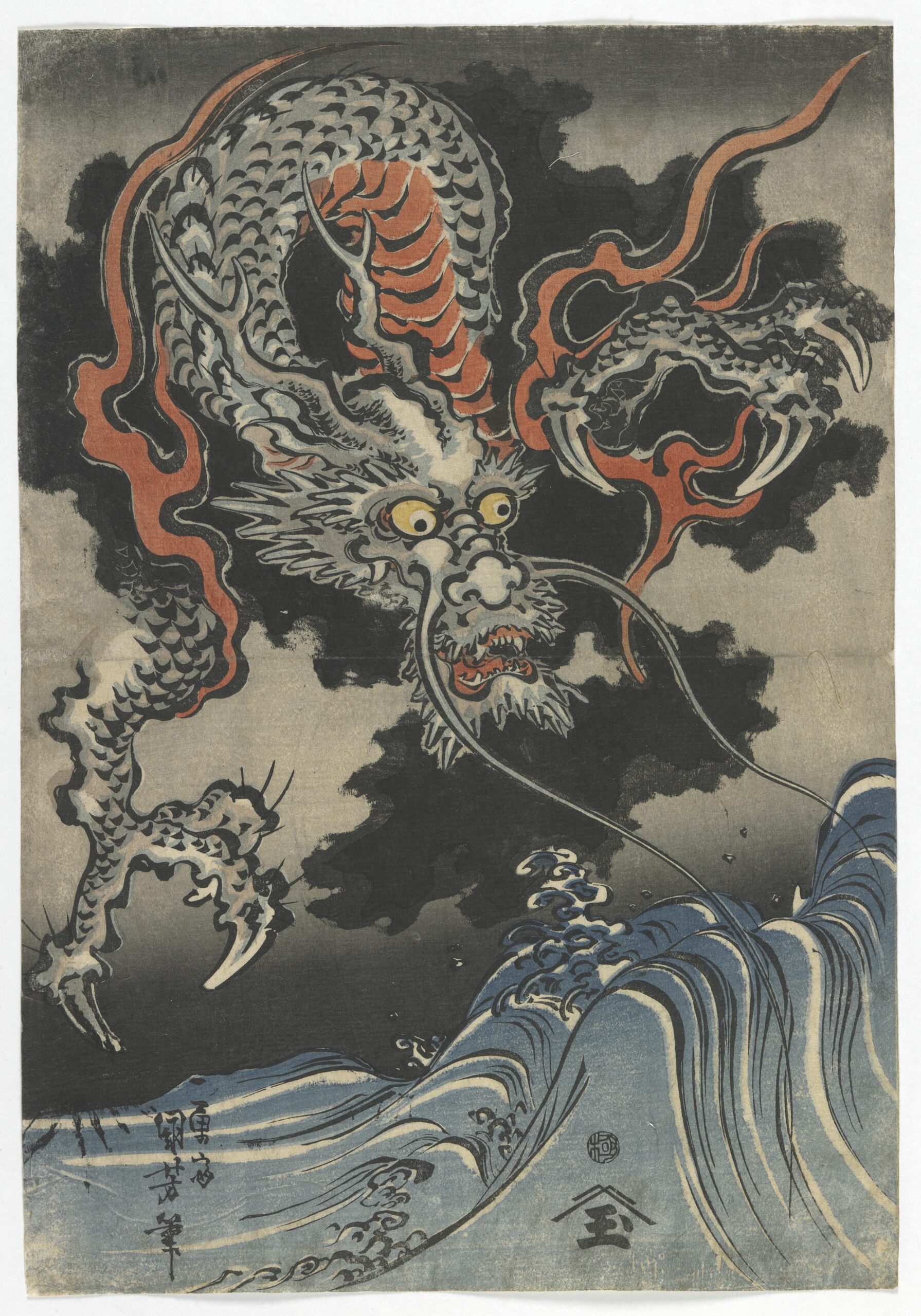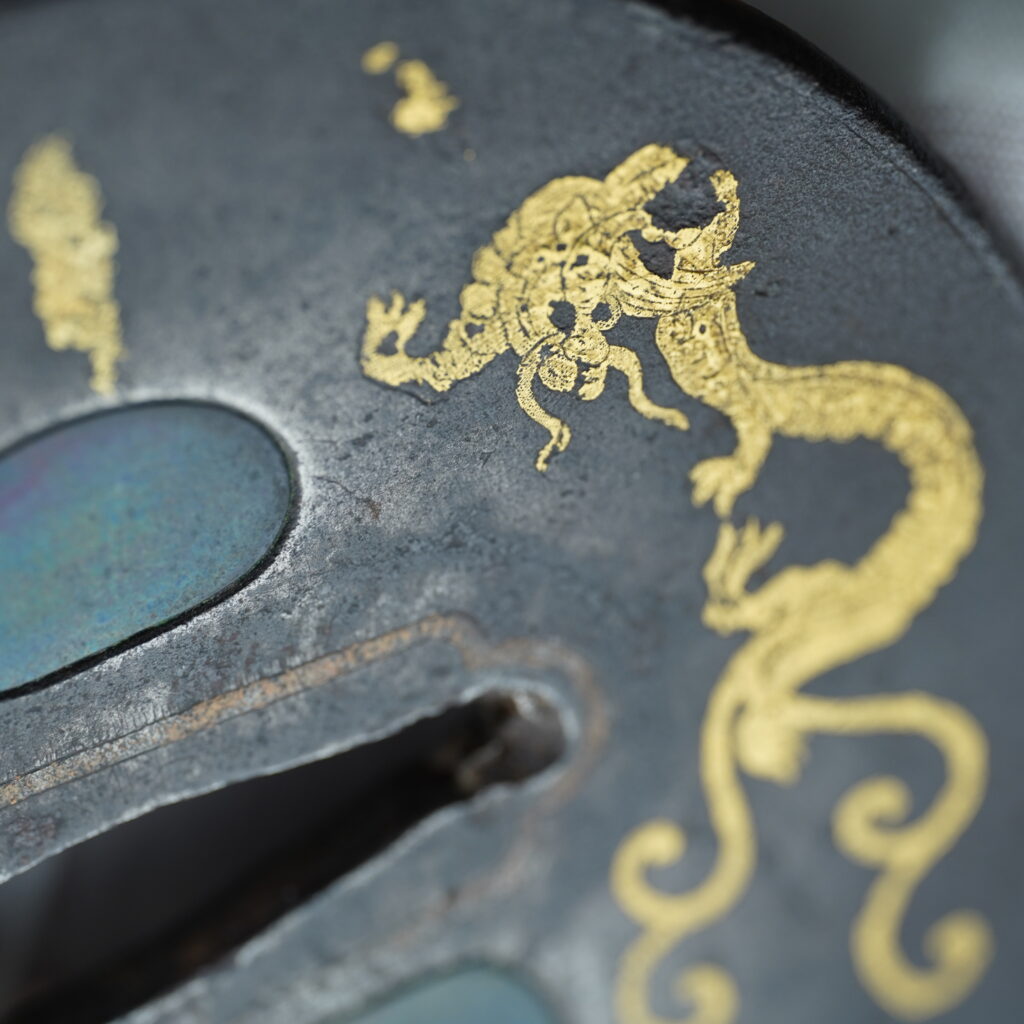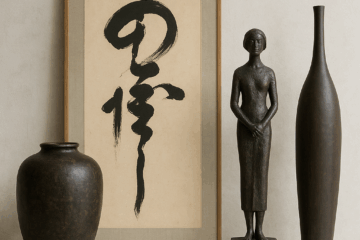The dragon, a symbol of strength and wisdom in Japanese art
The dragon, an emblematic figure of the Asian imagination, occupies a special place in Japanese art. A symbol of strength, wisdom and protection, it has established itself over the centuries as an essential motif in painting, sculpture, engraving and the decorative arts.
Largely inherited from Chinese tradition, the Japanese dragon (ryū) is nevertheless enriched by specific Japanese features: it is often associated with water and rain, a characteristic less present in other cultures.
It is generally depicted with three claws, unlike the Chinese five-clawed dragon, and its morphology can combine snake, reptile and sometimes feline traits, demonstrating the diversity of artistic interpretations.
The dragon is also linked to imperial and religious power, often guarding Buddhist temples as a celestial guardian.
The works of the great masters of ukiyo-e prints and ink paintings have immortalized these creatures, giving them a sinuous movement and subtle elegance that reflect their protective role as much as their mystical aura.
The dragon and samurai art
In samurai culture, governed by the bushidō ethic, the dragon takes on a very special significance. Synonymous with courage, loyalty and perseverance, it embodies the quest for excellence to which every warrior trained in the art of the sword is committed. Samurai armor is sometimes adorned with dragon motifs, inlaid in metal or elaborately painted on breastplates, to evoke valour in battle.
Similarly, some Japanese swords, such as katana, feature tsuba delicately decorated with dragons, testifying to meticulous craftsmanship and deep respect for this mythical creature. To wear this symbol is to proclaim that one carries within oneself the energy and determination of a being capable of mastering the forces of nature and surpassing human limits.
Legendary tales, recorded in military chronicles or handed down orally, abound with examples of how the samurai, inspired by the dragon, forged an exceptional destiny.
Dragon heritage and influences in Japanese culture
In addition to war iconography, the dragon is also used in the performing arts - such as kabuki theater - where it often symbolizes human perseverance and determination. They also appear in traditional architecture, adorning the roofs and friezes of shrines, underlining their protective role and ability to link the material world to the beyond.
This protean presence in Japanese culture reflects a complex spirituality, blending Buddhism, Shintō and Taoist heritage, making the dragon much more than a simple emblem. He thus assumes the role of guardian of cosmic balance and mediator between man and the divine.
Even today, his image continues to captivate and inspire contemporary artists - whether they're creating manga, tattoos or digital installations - perpetuating the rich Nipponese tradition around a mythical being whose influence extends far beyond national borders.
Proof if it were needed that the dragon remains, in the soul and art of Japan, the very embodiment of prestige, power and mystery.

You can also watch my video on the theme of dragons in Chinese art:






